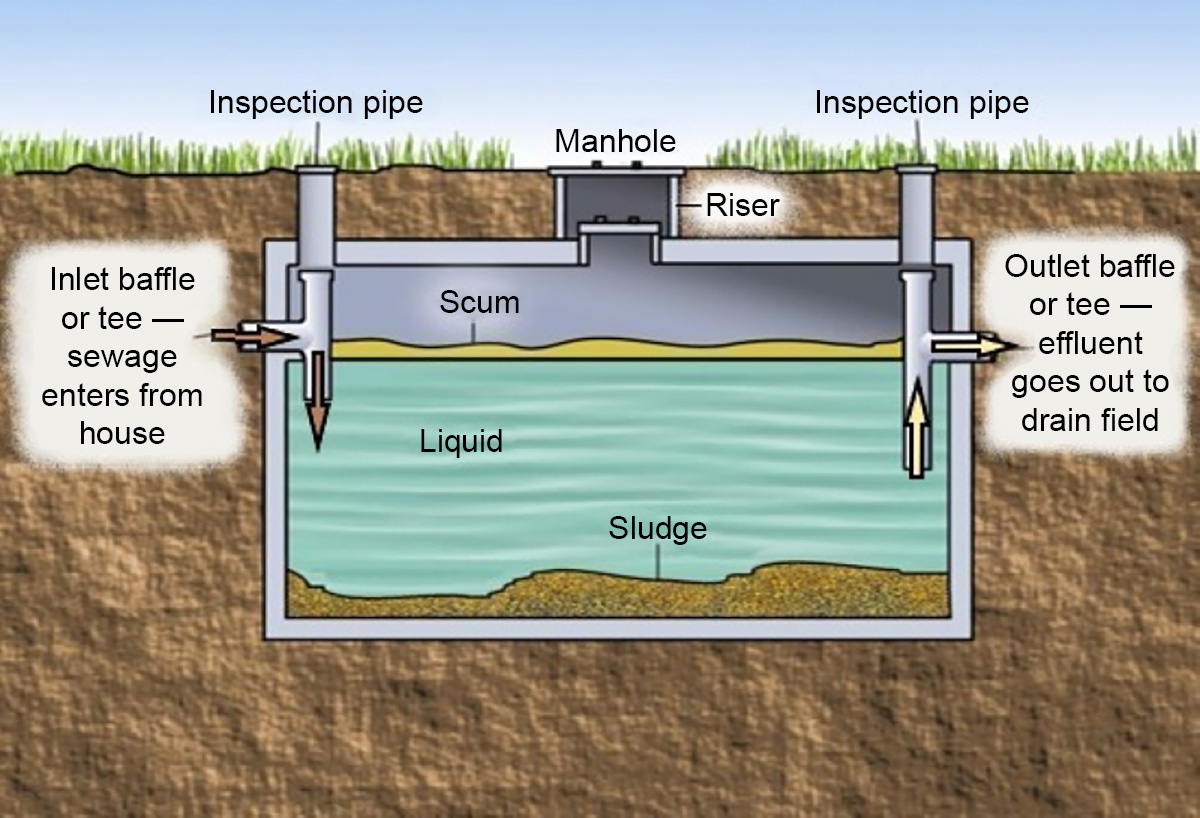
By Becky Schuerman, Extension Domestic Water/Wastewater Associate
WHAT MAKES A GOOD SEPTIC SYSTEM?
A properly designed, constructed, functioning and maintained septic system protects human and environmental health. This includes, but is not limited to, surface water, groundwater and soil quality in the immediate vicinity of the proposed onsite wastewater system. Annual inspection and maintenance of your onsite system helps to ensure a well-balanced, working septic system.
WASTEWATER 101
Whether you live in a rural area and have your own onsite system, or your house is hooked up to a municipal wastewater system, everyone needs to be conscious of what we flush down the toilet and dump down the drain. Your toilet and sink drain are not meant to be garbage disposals, and while the end point of your septic system may seem like a “black hole,” it is not a case of out of sight, out of mind. The end result of flushing/dumping anything and everything down your toilet or drain will cause undue stress on and/or malfunctioning of the septic system.
Regardless of what type of wastewater system your home is hooked up to, minimizing solids and grease in wastewater will improve overall system performance. Solids and grease add to the sludge and scum layers in the septic tank or lagoon, making it necessary to have a septic tank pumped/lagoons dredged more often. Solids such as human waste and food waste add to the organic load in the system. Too much organic matter can produce an unbalanced or overloading of the system, resulting in inadequate wastewater treatment. Problems can include clogged pipes, clogged filter screens or a clogged and/or saturated drain field.
SEPTIC TANKS
• Have a Nebraska Certified Pumper pump it regularly — every 2–3 years is common, but more often may be needed. Ask them to also inspect the tank to assure baffles are not damaged.
• Keep records of pumping — how much was pumped and date.
• No! Rid-X type products CANNOT replace septic tank pumping and WILL NOT solve septic tank problems.
• Inspect ports and manhole covers, making sure they are not damaged.
• No sidewalks, driveways, patios or buildings should be located over a septic tank to protect the tank integrity.
DRAINFIELDS — LATERAL AND MOUND SYSTEMS
• Avoid driving vehicles and locating other heavy objects on the footprint of a drainfield. Drainfield soil needs to remain uncompacted for effective and efficient final treatment of effluent from a septic tank.
• Do not locate animal confinement areas over a drainfield to avoid soil compaction.
• No sidewalks, drives, patios or buildings should be located over a drainfield.
• Maintain perennial grass cover over a drainfield to prevent erosion.
LAGOONS
• Keep the fence around the lagoon intact and maintained.
• Keep grass on berm mowed.
• Don’t allow trees to grow on the berm or in the lagoon.
• Manage lagoon vegetation to allow good airflow and sunlight to reach the water surface.
• Maintain a 2–5 feet water level in a lagoon to allow for proper wastewater treatment.
FOR MORE INFO
Nebraska Extension has several resources about wastewater at https://go.unl.edu/wastewater-what-it